The Grand Canyon, a magnificent natural wonder located in Arizona, is renowned for its extraordinary geological features and diverse ecosystems. The canyon itself is a vast chasm, with some sections reaching depths of over a mile (around 6,000 feet or 1,800 meters) below the rim.
The Grand Canyon National Park, which covers the central portion of the canyon, showcases the river’s path from Lake Powell to Lake Mead, featuring striking peaks, buttes, gorges, and ravines within its broad and sculpted expanse.
One of the most fascinating aspects of the Grand Canyon is its geological history, revealed through the exposed strata that rise over a mile above the river. This includes a variety of rock formations, such as gneiss and schist at the canyon’s base, dating back 1,800 million years.
Different habitats are found at various elevations along the 8,000-foot gradient, ranging from riparian communities along the Colorado River to desert scrub, pinyon-juniper woodlands, ponderosa pine forests, and spruce-fir forests at higher elevations.
The climate of the Grand Canyon varies significantly with elevation; the North Rim experiences heavy snowfall, while the South Rim and the canyon bottom have milder winters.
Summers are hot, with temperatures exceeding 100°F at lower elevations. The region experiences a monsoon season with thunderstorms, leading to potential flash floods and forest fires.
Best Times to Visit the Grand Canyon for Smaller Crowds
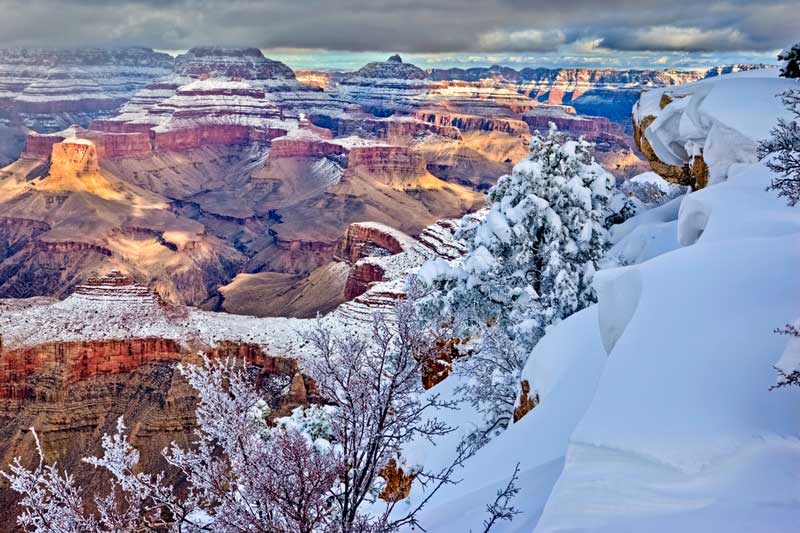
Grand Canyon, Arizona during winter season
Visiting the Grand Canyon during less crowded times can significantly enhance your experience. Winter, particularly December, January, and February, is an excellent period for avoiding crowds.
These months offer unique and serene experiences with the possibility of snow, creating stunning contrasts against the canyon colors. The temperatures at the bottom of the canyon can be quite mild, often reaching the 60s or 70s, making winter hiking enjoyable.
Spring, specifically March, April, and May, is another great time to visit. In March, the weather starts to warm up, though it can still be unpredictable with occasional gusty winds.

Rafting in the Gran Canyon
April offers a balance between pleasant temperatures and relatively low precipitation, ideal for outdoor activities. May sees mild and dry conditions, perfect for hiking and sightseeing.
However, as spring progresses, visitor numbers and accommodation rates increase, with May resembling summer-like conditions in terms of visitor numbers and costs.
If you’re considering rafting, April through October is the best period, with May and September being prime times due to moderate temperatures. However, be prepared for cooler conditions in the shoulder months of April and October.
Best Times to Visit the Grand Canyon for Good Weather
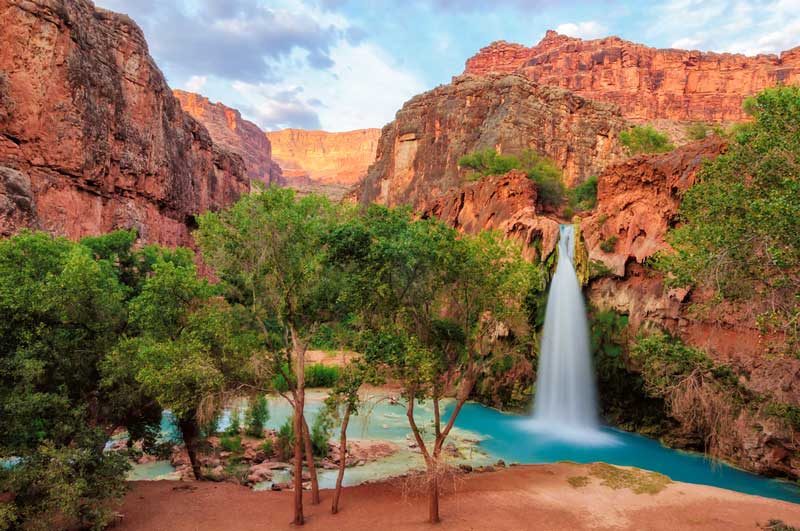
Grand Canyon during Spring
The best times to visit the Grand Canyon for favorable weather are generally during spring and fall. In the spring, particularly from March to May, the weather at the South Rim begins to warm, with average high temperatures ranging from 51°F in March to 70°F in May.
While mornings and evenings can still be chilly, the overall conditions are pleasant for hiking and sightseeing. Do note that ground snow can cause fog in March, and occasional snowfall may still occur in April.
October is considered an excellent month to visit as it offers a balance between pleasant weather and smaller crowds. This “Goldilocks” month brings together mild temperatures, fewer visitors, and beautiful scenery, making it an ideal time for exploring the park.
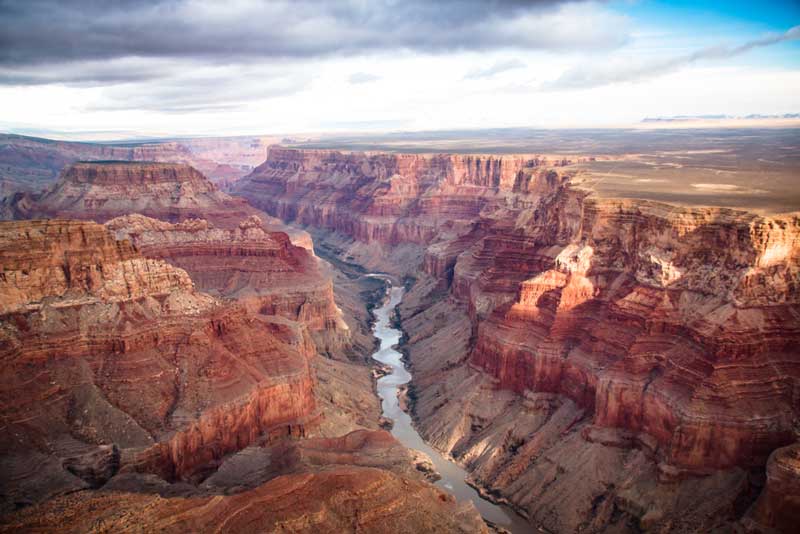
The south and north rim part in grand canyon
The North Rim, which is open from May 15th to October 15th, offers a more solitary experience and showcases the natural beauty of the canyon with vibrant colors during the fringe months of May and October.
Temperatures inside the canyon, particularly in summer, can reach extreme highs, so proper planning and caution are advised for those planning to hike.
Best Times to Visit the Grand Canyon for Lower Prices
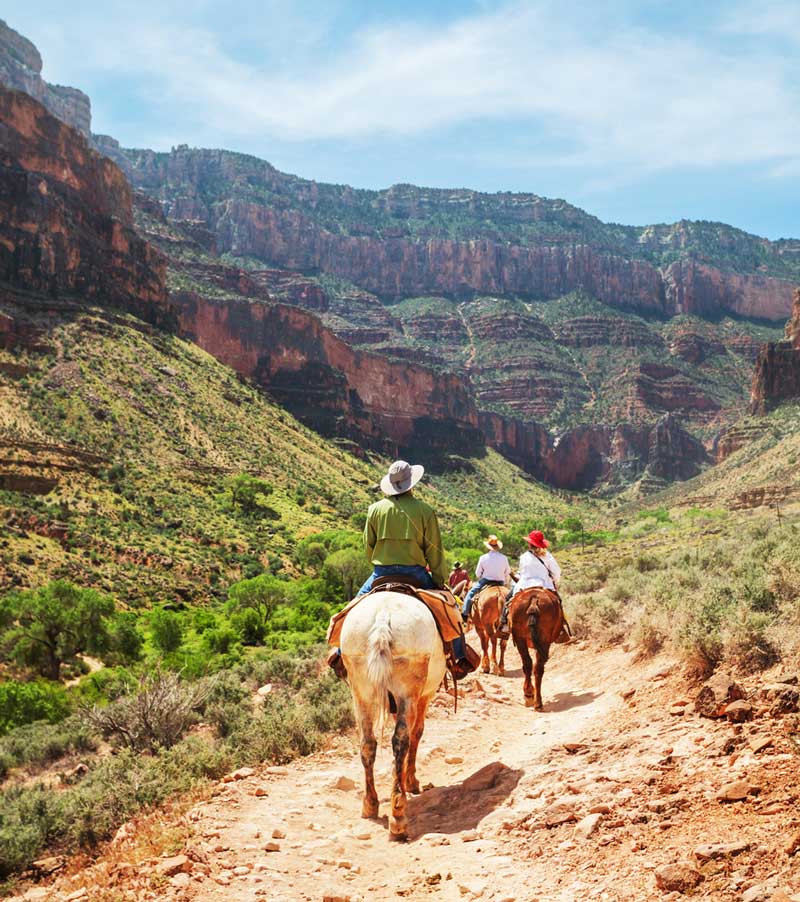
Hike in Grand Canyon
If you’re looking to visit the Grand Canyon while keeping an eye on your budget, certain times of the year offer more affordable options. Winter, particularly from December to February, emerges as the most economical period.
During these months, the park experiences fewer visitors, leading to lower accommodation prices. However, it’s important to be prepared for winter weather conditions, which can include snow and icy trails.
Fall, encompassing September, October, and November, is another period where you can enjoy lower costs. This season brings cooler temperatures, lighter crowds, and more reasonable rates for hotels and other accommodations.
The natural beauty of the canyon during autumn, with its changing colors and comfortable hiking conditions, adds to the appeal of visiting during these months.
Best Times to Visit Grand Canyon West
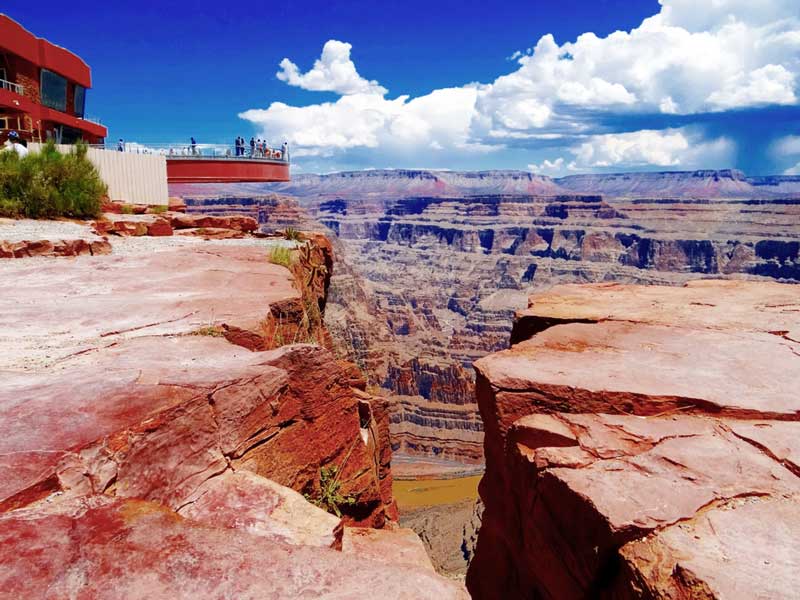
Grand Canyon Skywalk, Hualapai Reservation
Grand Canyon West, being part of the Hualapai Reservation, offers unique cultural experiences and breathtaking views from attractions like the Skywalk, a cantilever glass bridge extending over the canyon.
Visiting Grand Canyon West offers a unique experience distinct from the North and South Rims. The most favorable times to visit Grand Canyon West are from February to May and from September to November.
During these periods, you can avoid the peak visitor season, which typically runs from June to August, characterized by crowds, queues, and full shuttle buses.
The weather during these recommended periods is generally more pleasant, avoiding the extreme heat of the summer months. February offers comfortable temperatures, but be prepared for potential insect bites if you plan to walk around the canyon floor.
The end of September also provides warm but bearable weather conditions. Regardless of when you visit, it’s essential to wear appropriate clothing, use insect repellent, apply sunscreen, and stay hydrated.
Remember, ticket prices vary based on the activities you choose, and it’s advisable to check the current rates and options before your visit. Also, keep in mind that food and drink from outside are not allowed, but there are cafes and restaurants available on-site.
Worst Times to Visit the Grand Canyon
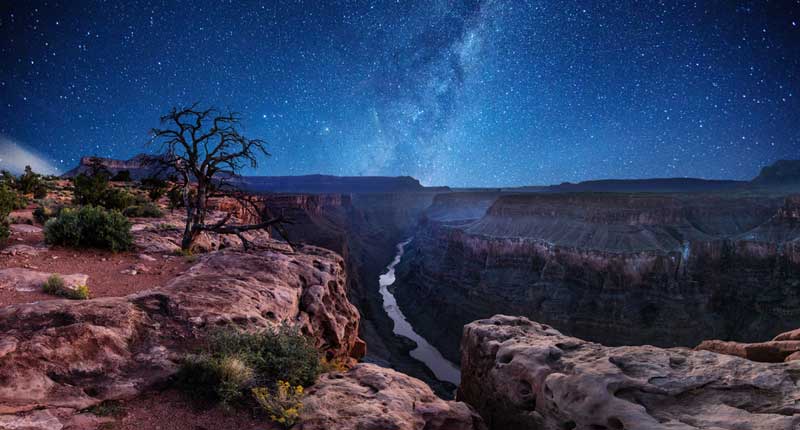
Grand Crayon during dark summer
The worst times to visit the Grand Canyon are typically during the summer months, specifically July and August. This period is characterized by intense heat, larger crowds, and wetter weather, making it a less ideal time for exploring the canyon.
The extreme temperatures during these months can make hiking and other outdoor activities exhausting and even dangerous. Additionally, the large crowds can lead to parking difficulties and long waits for shuttle buses, diminishing the overall experience.
It’s also worth noting that if you’re interested in exploring the North Rim of the Grand Canyon, it’s best to avoid the winter months when all roads, restaurants, and accommodations in that area are closed due to heavy snowfall.
Final Thoughts
The Grand Canyon, with its awe-inspiring vistas and unique geological formations, is a must-visit destination. However, the timing of your visit can greatly impact your experience.
Spring and fall offer milder temperatures and fewer visitors, making these seasons ideal for exploring the canyon’s beauty comfortably. Winter offers a unique perspective, especially at the North Rim, but accessibility is limited.
Careful planning considering these factors can ensure a memorable and enjoyable visit to this natural wonder
